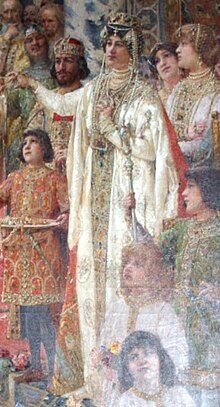Marriage
Helen became queen of Croatia during her marriage with Croatian king Demetrius Zvonimir, a distant relative whom she married in 1063. They had a son named Radovan, [1] who died in his late teens or early twenties, and daughters named Claudia [2] and Vinica.
Helen had excellent family connections, being an aunt to Irene, the mother of the Byzantine Emperor Manuel I Komnenos.
Helen was very popular with the Croats, and they often called her Jelena Lijepa ("Helen the Beautiful"). She is thought to have been an influential consort.
Upon the death of Zvonimir, Helen was said to have been quietly plotting the inheritance of the Croatian Crown for her brother, the King of Hungary, which caused a decade of war and instability in the kingdom, resulting in the personal union of Croatia and Hungary that lasted until 1918. Helen died around 1091. [3]
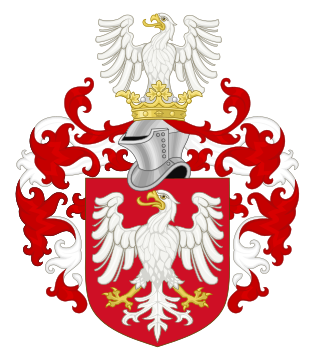
The House of Piast was the first historical ruling dynasty of Poland. The first documented Polish monarch was Duke Mieszko I. The Piasts' royal rule in Poland ended in 1370 with the death of king Casimir III the Great.

The Kingdom of Croatia entered a personal union with the Kingdom of Hungary in 1102, after a period of rule of kings from the Trpimirović and Svetoslavić dynasties and a succession crisis following the death of king Demetrius Zvonimir. With the coronation of King Coloman of Hungary as "King of Croatia and Dalmatia" in 1102 in Biograd, the realm passed to the Árpád dynasty until 1301, when the (male) line of the dynasty died out. Then, kings from the Capetian House of Anjou, who were also cognatic descendants of the Árpád kings, ruled the kingdoms. Later centuries were characterized by conflicts with the Mongols, who sacked Zagreb in 1242, competition with Venice for control over Dalmatian coastal cities, and internal warfare among Croatian nobility. Various individuals emerged during the period, such as Paul I Šubić of Bribir, who was representing the most powerful Croatian dynasty at the time, the Šubić noble family. These powerful individuals were on occasion able to de facto secure great deal of independence for their fiefdoms. The Ottoman incursion into Europe in the 16th century significantly reduced Croatian territories and left the country weak and divided. After the death of Louis II in 1526 during the Battle of Mohács and a brief period of dynastic dispute, both crowns passed to the Austrian House of Habsburg, and the realms became part of the Habsburg monarchy.

Petar Snačić was a feudal lord, notable for being one of the claimants of the Croatian throne between c. 1093 and 1097. It is assumed that he began as a ban serving under king Demetrius Zvonimir of Croatia and was then elected king by the Croatian feudal lords in 1093. Petar's seat of power was based in Knin. His rule was marked by a struggle for control of the country with Coloman of Hungary, dying at the Battle of Gvozd Mountain in 1097.
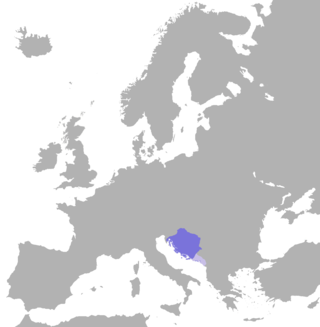
The Kingdom of Croatia, or Croatian Kingdom, was a medieval kingdom in Southern Europe comprising most of what is today Croatia, as well as most of the modern-day Bosnia and Herzegovina. The Croatian Kingdom was ruled for part of its existence by ethnic dynasties, and the Kingdom existed as a sovereign state for nearly two centuries. Its existence was characterized by various conflicts and periods of peace or alliance with the Bulgarians, Byzantines, Hungarians, and competition with Venice for control over the eastern Adriatic coast. The goal of promoting the Croatian language in the religious service was initially introduced by the 10th century bishop Gregory of Nin, which resulted in a conflict with the Pope, later to be put down by him. In the second half of the 11th century Croatia managed to secure most coastal cities of Dalmatia with the collapse of Byzantine control over them. During this time the kingdom reached its peak under the rule of kings Peter Krešimir IV (1058–1074) and Demetrius Zvonimir (1075–1089).
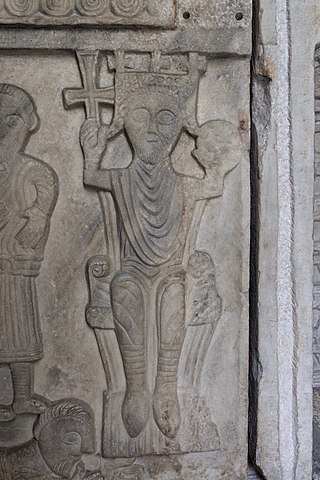
Demetrius Zvonimir was a King of Croatia and Dalmatia from 1075 or 1076 until his death in 1089. Zvonimir also served as Ban of Croatia (1064–1074), and was named Duke of Croatia in around 1075. His native name was Zvonimir, but adopted the forename Demetrius at his coronation.
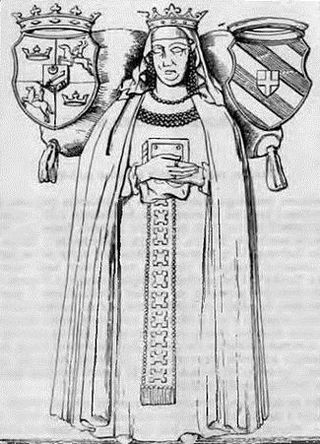
Catherine of Bosnia was Queen of Bosnia as the wife of King Thomas, the penultimate Bosnian sovereign. She was born into the powerful House of Kosača, staunch supporters of the Bosnian Church. Her marriage in 1446 was arranged to bring peace between the King and her father, Stjepan Vukčić. The queenship of Catherine, who at that point converted to Roman Catholicism, was marked with an energetic construction of churches throughout the country.
Helen, also known by the name Gruba/Груба, ruled the Kingdom of Bosnia from September 1395 until late April or early May 1398. She was queen consort as the wife of King Dabiša, and was chosen by the stanak to rule after his death. Whether she was a regent who ruled during an interregnum or a queen regnant is disputed, but in any case the real power was held by magnates of the kingdom. Her rule ended with the election of King Ostoja.

Maria Laskarina was a Greek Queen consort of Hungary by marriage to Béla IV of Hungary. She was the daughter of Theodore I Laskaris and Anna Komnena Angelina.

Elizabeth of Bosnia was queen consort of Hungary and Croatia, as well as queen consort of Poland, and, after becoming widowed, the regent of Hungary and Croatia between 1382 and 1385 and in 1386.
Stephen II was the last member of the Trpimirović dynasty and last native king of Croatia to rule the entire medieval Croatian Kingdom. Stephen's father was Gojslav II, the younger brother of Peter Krešimir IV of Croatia. Stephen was duke of Croatia under Krešimir around 1066.
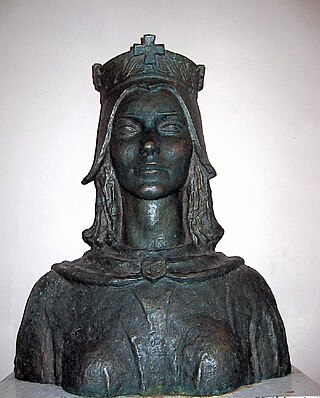
Helen of Zadar, also known as Helen the Glorious, was the queen consort of the Kingdom of Croatia, as the wife of King Michael Krešimir II, from 946 to 969, a period which was marked by "peace, order and expeditious growth". She was the regent of Croatia after the death of her spouse during the minority of her son Stephen Držislav of Croatia, and ruled from 969 until 976.

Helen of Anjou was the queen consort of the Serbian Kingdom, as the spouse of King Stefan Uroš I, who ruled from 1243 to 1276. Their sons were later Serbian kings Stefan Dragutin (1276–1282) and Stefan Milutin (1282–1321). As a dowager-queen, she held the provincial governorship in the regions of Zeta and Travunija. She built Gradac Monastery and was known for her religious tolerance. She is revered as a saint by the Serbian Orthodox Church. Her relics, however, are now lost.
Dorothea of Bulgaria, also called Doroslava, was the first Queen of Bosnia. Daughter of the Bulgarian tsar Ivan Sratsimir, Dorothea was held hostage by King Louis I of Hungary, who married her off to Ban Tvrtko I of Bosnia in 1374. She became queen in 1377 and may have been the mother of King Tvrtko II.

Milena Petrović-Njegoš was the only Queen consort of Montenegro as the wife of Nicholas I. She was regent of Montenegro during the absence of her spouse in 1869 and in 1883. She also served as titular regent for the titular king-in-exile Michael in 1922–1923.

Richeza of Poland was Queen Consort of Hungary by marriage to Béla I of Hungary.
Elizabeth of Kuyavia was a Polish noblewoman of the House of Piast. She was the only daughter of Duke Kazimierz III of Gniewkowo and his wife, whose name and origins are unknown; her brother, Władysław the White, was later a candidate for the Polish throne.

Maria of Serbia, christened Helena, was the last queen of Bosnia and despoina of Serbia. As the eldest daughter of the deceased despot of Serbia, Lazar Branković, the 12-year-old Helena was given in marriage to the Bosnian prince Stephen Tomašević in 1459. She then took the name Maria, while her husband obtained the title to Serbia through her. The country was lost to the Ottomans within a few months, and the couple fled to Bosnia. Maria's husband ascended the Bosnian throne in 1461, but two years later the kingdom too fell to the Ottomans and he was executed. The widowed queen avoided capture by fleeing to the coast. Having spent a few years in Venetian Dalmatia and possibly Hungary, Maria settled in Ottoman Greece at the court of her aunts Mara and Kantakouzene, where she spent her life in a string of conflicts and legal disputes with Kantakouzene, the Republic of Ragusa, and the Athonite monasteries.
Kujava Radinović was the second wife of King Stephen Ostoja of Bosnia and as such she was Queen of Bosnia from 1399 to 1404 and again from 1409 to 1415. She was the daughter of the nobleman Radin Jablanić.
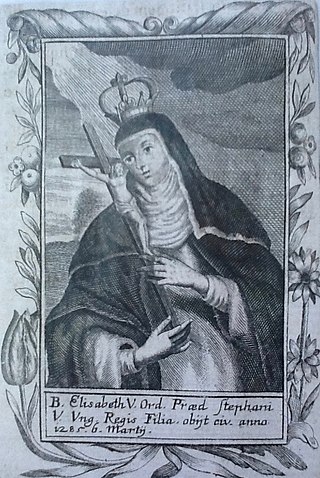
Elizabeth of Hungary, also known as Blessed Elizabeth the Widow, was a Hungarian princess member of the Árpád dynasty and Queen consort of Serbia. Since childhood, she was veiled as a nun, but she was married twice, and both times she was kidnapped by her husbands, Bohemian magnate Záviš of Falkenstein and King Stefan Uroš II Milutin of Serbia. Both husbands were in an unacceptable degree of kinship with Elizabeth from a canonical point of view: the marriage with Záviš of Falkenstein was not recognized by the Hungarian Church, and the marriage with Stefan Uroš II Milutin was not recognized by the Serbian Church. Nevertless, Elizabeth was venerated by the Hungarian Church as Blessed, while her scandalous marriage history is almost never mentioned in the later accounts of her life.
Helena, Helen, Jelena or Ilona of Hungary may refer to:
